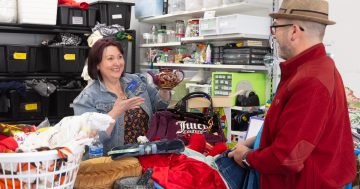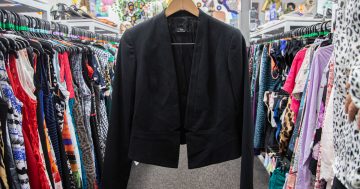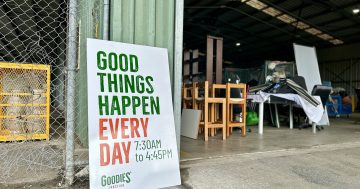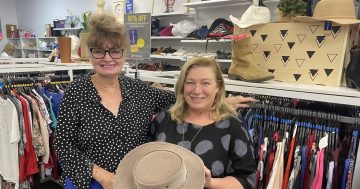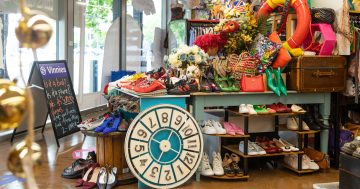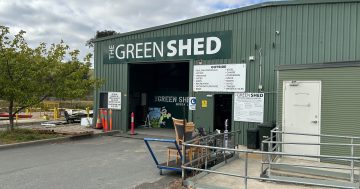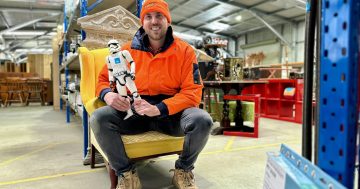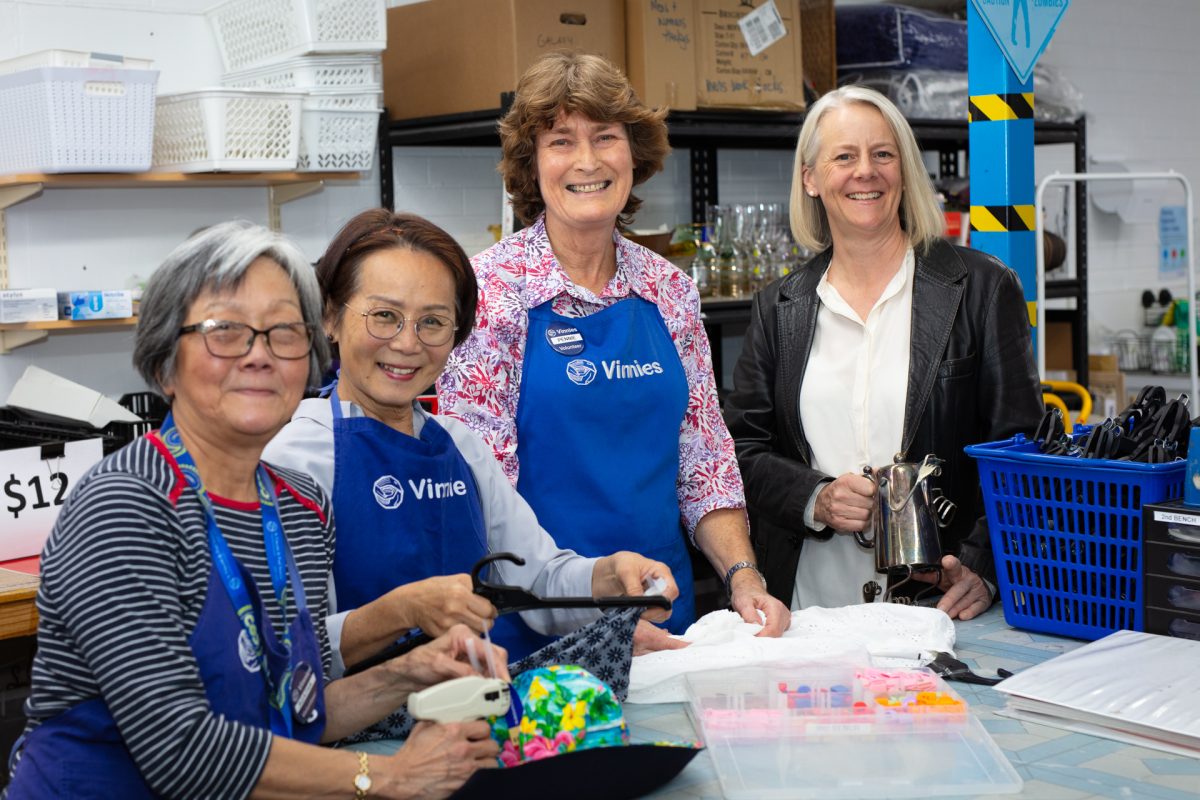
The modern-day charity or op-shop is more than just a good resource for costumes or vintage and hipster fashion – they’re a major contributor to a circular economy. Photo: Thomas Lucraft.
Whatever way you slice it, Australia has a consumption problem and it’s headed nowhere good, according to Elizabeth (Liz) Heath.
The Vinnies project and business development manager can produce endless statistics to support the position, and any one of them will leave you feeling a little dizzy.
“Australians consume an average of 56 items of clothing per person per year. That’s almost 15 kg per person, most of which is imported,” she says.
“It makes us the second biggest fashion consumer in the world, and half of it ends up in landfill. It’s insane.”
The associated overuse of natural resources and increased greenhouse gas emissions are issues that will impact our children and future generations. But Liz says there are solutions within reach. Some will require a lot of work and some sacrifice, but one, at least, is a win-win.

Vinnies project and business development manager Liz Heath says there are many reasons why Vinnies’ circular economy model stands up against fast fashion retailers. Photo: Thomas Lucraft.
The modern-day charity or op-shop is more than just a good resource for costumes or vintage and hipster fashion. Op shops are a major contributor to a circular economy – an economic system that involves finding ways to use things for as long as possible.
Charity shops have been around in Australia for a lot longer than you probably think. The first Vinnies, established in Sydney, marked 100 years of operation this year. In the capital region, there’s a network of 27 Vinnies shops and another is soon to open in Braddon. The first in the ACT, Narrabundah, turns 60 next year.
In this time, Vinnies has established itself as one of the country’s largest sustainable retailers. The organisation was specialising in circular and sustainable operating practices before the term ‘circular economy’ was even coined.
Liz believes circular economy contributors like Vinnies will be a key factor in the fight against the environmental impacts of fast fashion. But it is an uphill battle.
In the past decade, the amount of clothing donated to Vinnies has increased 300 per cent, and the vast majority of it is fast fashion that’s unsuitable for resale in their stores.
“The impact those shops have on charity stores is we get a lot more of that throwaway, single-use clothing in our donations,” Liz explains.
“Fast fashion is marketing gone mad, and a big part of the problem is that the people making those items are not paying the price of its disposal.”
Besides the environmental imperative, however, there are many reasons why Vinnies’ circular economy model stands up against fast fashion retailers.
“Quite simply, op shopping is fun, and when you find something you like, in your size, for a fraction of the retail cost, you get a rush that can’t be replicated in traditional shopping experiences,” Liz says.
“Every time you use that item, you’ll remember that and get a little thrill.
“In addition, chances are you’re getting a much better quality item for the money you’re spending, and much of it looks unworn. It might even still be new with tags on.”
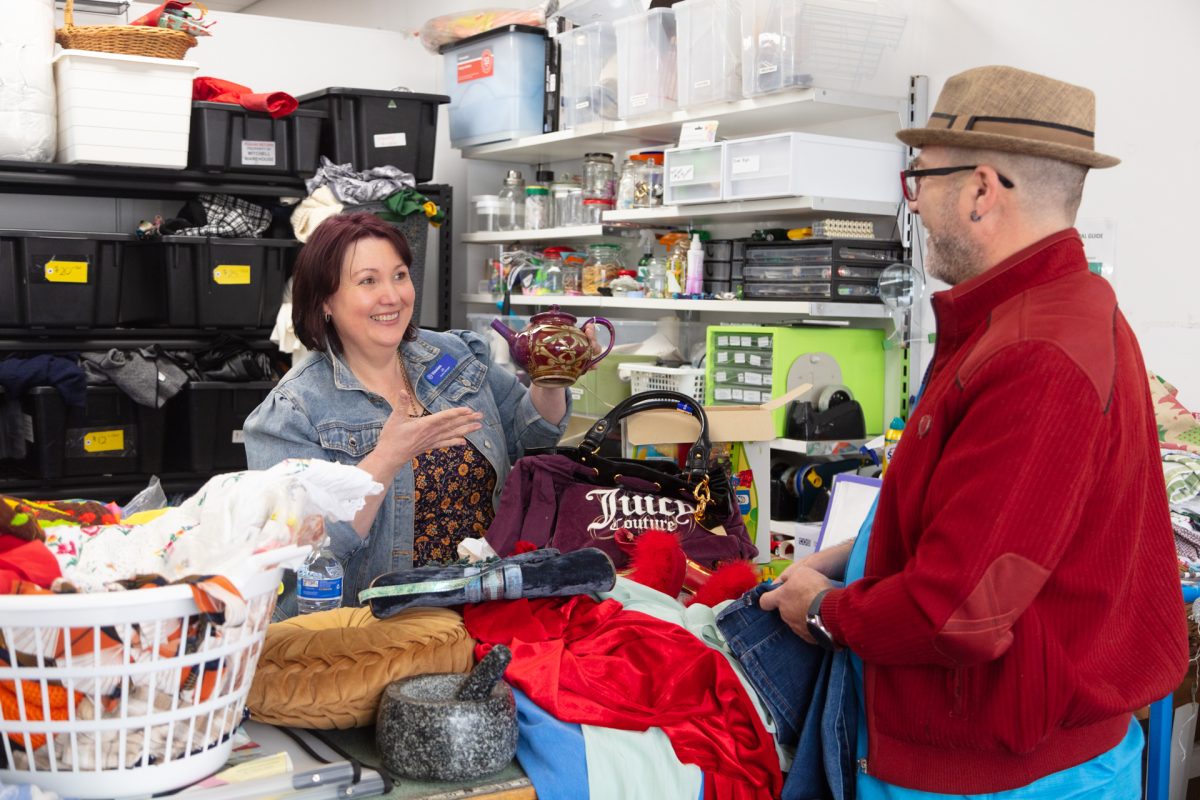
Vinnies Queanbeyan Shop Manager Jo Schirmer sorting through some of the donations. Photo: Thomas Lucraft.
A great deal of Vinnies’ resources are spent on managing the vast volumes of donations that come in to ensure only the best end up on the shelves. Over the years, it has elevated the shopping experience.
Liz says it’s part of a long-term hope that we can shift the consumer default to trying a charity shop like Vinnies before attempting to buy items new.
“That would make a world of difference to the planet,” she says.
“What’s more, our wallets would thank us, and we would know that the money spent goes towards charitable activities and will be put to good use in the community.”
At their core, Vinnies charity stores serve two core purposes. One is the supply of material goods for those in need.
“There’s a misconception that the prices in store can exclude people in need when, in reality, we have inclusive systems in place that allow them to shop at our stores and receive their items either discounted or for free,” Liz says.
“The other purpose is to raise money for our charitable works.”
This means primarily the provision of material assistance such as food, utilities, transport and medical needs, but also advocacy, budget counselling, education, training and supported employment opportunities, home visitation, homeless services, housing support and emergency accommodation, mentoring and social support programs, and mobile and fixed meal services.
“The two Night Patrol vans, which run 364 nights per year, providing food, clothing, bedding and social contact to Canberra and Queanbeyan’s most needy, are funded through the shops,” Liz says.
“That’s just one example. Vinnies delivers a whole array of community-based programs, and that’s what the money from the shops is used for.
“There’s so much to gain by shopping at Vinnies. No matter how you slice it, it’s a win.”
To donate or shop at Vinnies, visit your local store.













